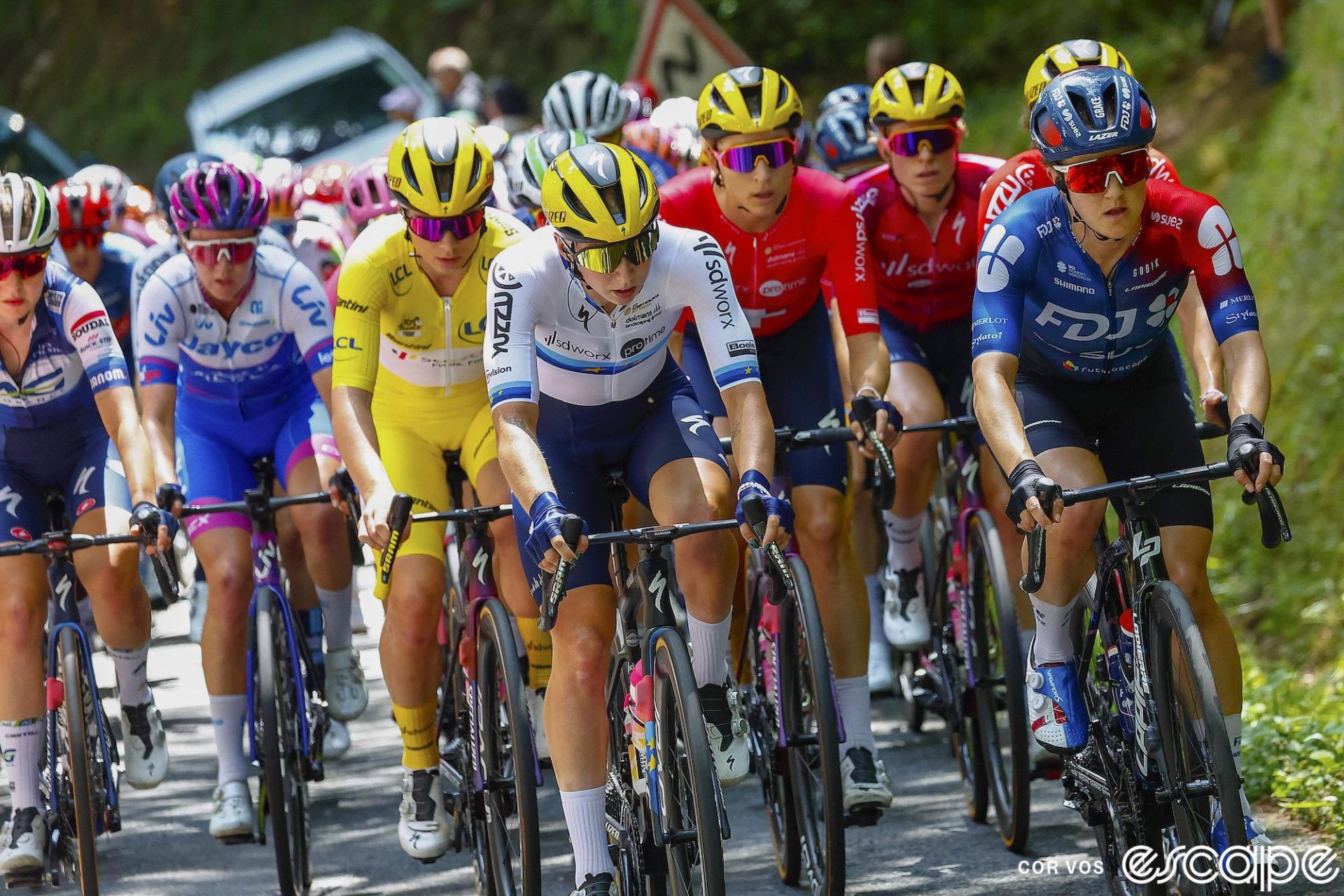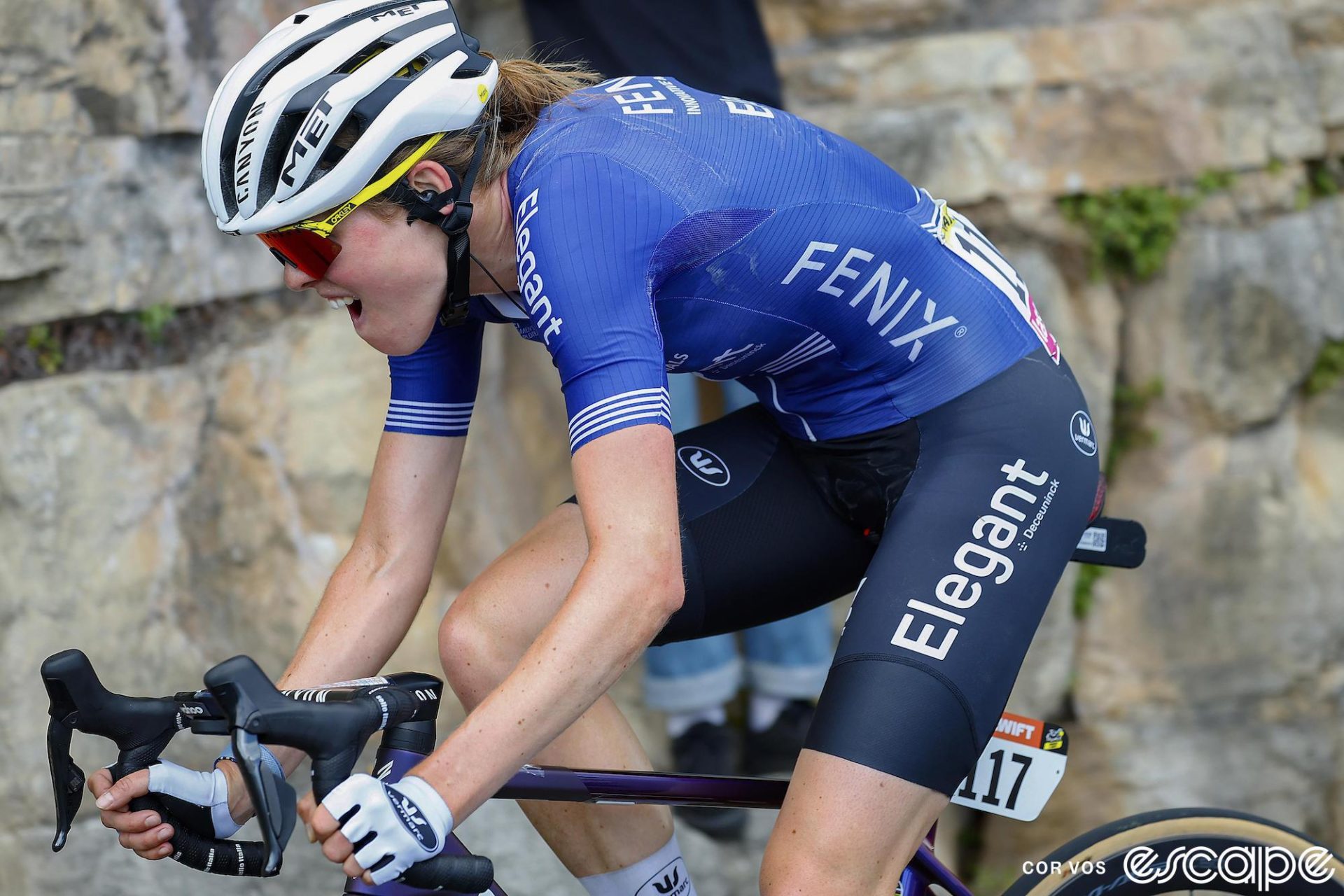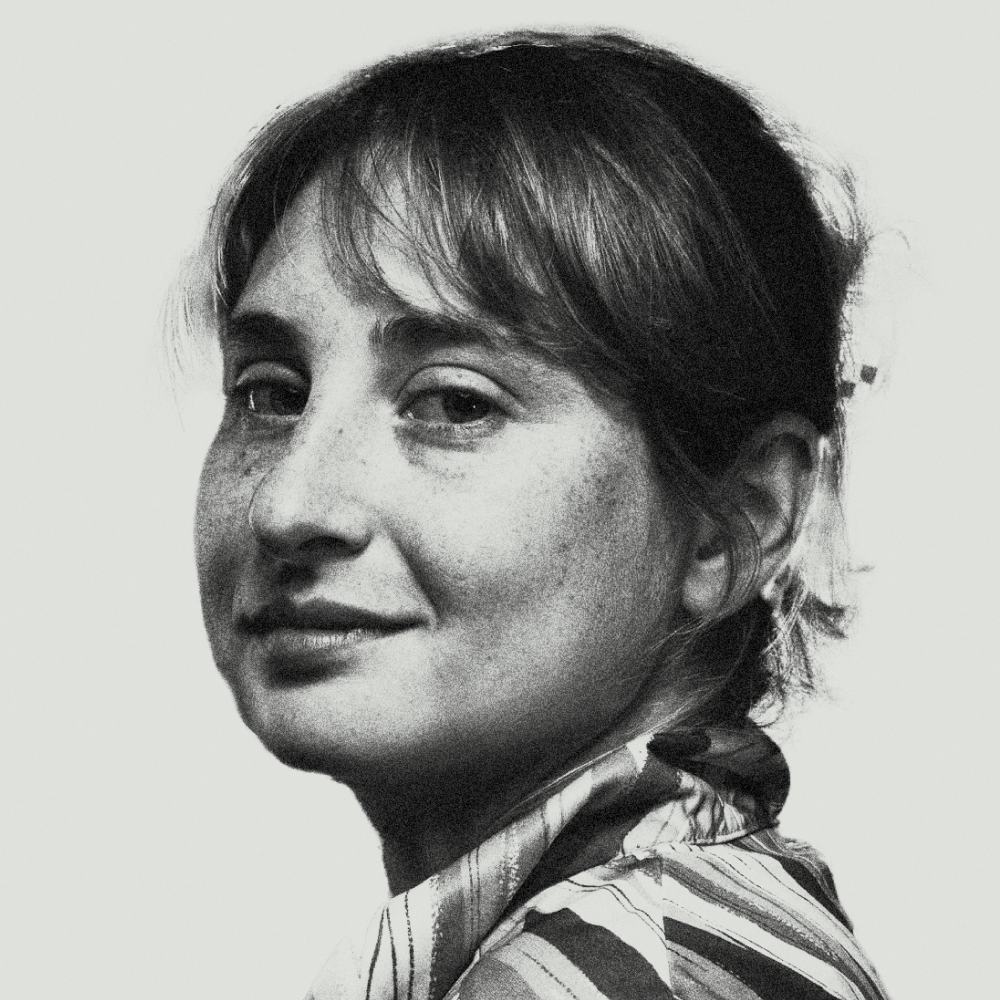One of the divine pleasures of the Tour de France Femmes avec Zwift is that it is smaller than the Tour de France Hommes and therefore can travel to smaller and more beautiful places than the men’s race, which only goes to places with enough office parks on the periphery to support the seemingly endless vehicles of the caravan.
I consider myself well-traveled around France after three Tours but in reality I am only well traveled around men’s stage start locations. Pau, Albertville, Lourdes, highways in between all those places etc. But today, we drove through the twisty, cell-phone-signal-bereft hills from Mauriac to the start town of Collonges-la-Rouge and saw the kind of France that people wax poetic about in novels, the kind of France that makes you understand why Impressionism is from there.
The sandstone crags burst with wildflowers of purples and blues. The hills, in pale greens and golds, supported the foundations of chateaux after chateaux, the horizon turning blue in the distance under the gray sky. Peach, crabapple, and chestnut trees lined the road, all beginning to bear fruit. The stone houses closed their colorful shutters in hope of better weather. Everything was fertile and alive and quiet and quivering in the breeze.
Collonges-la-Rouge was incorporated by monks in the 8th century, though most of the cloistered, petite buildings date from the 1600s. What is so striking about this small village is its late medieval and early Renaissance urbanism – it is fortified, and the buildings are tucked away on narrow streets. All are made of red sandstone. Some are stolid and feature half-timbering, others are more filigreed with curled ornament around the windows. Turrets pop up over rooftops.
I decide to step into the chapel, made of four intersecting vaults. Chairs are piled up in the corner, for it is not Sunday. It is small and punctured by a few stained glass windows, the whole arrangement a mix of grandiose and humble, which just about sums up the relationship between the worshiper and the worshiped. The road out of town is lined with fans to its capacity. Rain splatters the ground, darkening the red sandstone into a burgundy, but it passes just as quickly. The women fan across the road and slowly make their way to kilometer zero. The chestnut trees wait patiently for their spiky vessels to be brought to fruition.
For SD Worx, this fertile road is their property. It was bad enough to let Julie Van de Velde get away, but when the attacks start flying over the little hills, when the riders start to blur the lines between sneaking points and sneaking into a breakaway over the top, SD Worx reminds everyone of this basic fact. They have their picks of many sentries in the shadows of stone chateaux and lush green trees. Each of them watches as Kasia Niewiadoma snags another few points at the top of yet another little lump of the road. They send Marlen Reusser to the front to fetch the 16 seconds back from her. The word of the day is control.

Julie Van de Velde has control too, over her pace, her breathing, what she has left versus how much is to come. Forty-two kilometers to go, and she has a minute and a half. At 25 km to go she has almost two. Soon SD Worx sends Reusser to the front again. They need a time trialist if they’re going to close such a gap. Lorena Wiebes, Ashleigh Moolman Pasio and Lotte Kopecky try for the sprint points, and Anna Henderson of Jumbo-Visma tries to take advantage of it. But it’s not going to happen. The word of the day is control. Time disappears in the grip of the peloton. Only one rider acts in protest of it and she is Julie Van de Velde.
What we have here in the long run-up to the sprint is a game of calculus, a function of time, distance, and speed. The limbo between one rider and her pursuers is no man’s land. As the distance dwindles, the sprint trains become more and more organized and yet, at the same time more and more wary of one another.
We’ve seen this play out many times before, a scenario in which the rider out front looks doomed until they aren’t. The balance of power between predator and prey is mediated on the endurance and cleverness of the prey. Van de Velde is riding cleverly, and she is riding hard, with total commitment. A stage in the Tour de France would mean the world for the Belgian rider from Fenix-Deceuninck, who had been so aggressive in the Tour de Suisse and in her spring campaign. It is rather unfortunate for all dreamers that the peloton behind contains SD Worx working on the behalf of Wiebes and a charging Team DSM-Firmenich, working for Charlotte Kool. These are dangerous opponents for anyone, but for a lone rider, the pressure alone must keep the legs turning.
It makes some sense that, on the run-in to the small, white-sandstone town of Montignac-Lascaux DSM are the ones driving and SD Worx are the ones sitting behind. Wiebes would later tell the press that her team was working towards many different goals: GC, sprinting, etc. while DSM only had sprint considerations with Kool. Regardless, the efforts of only one team on the front enable Van de Velde to get down to the wire in her efforts. What seemed like an open-and-shut blaze-of-glory breakaway is dragging out into something that could potentially pay off big time.
Breakaways like this conjure up literary analogies left and right, the most common being biblical: David and Goliath. In a society which prefers to elevate the achievements of individual strength over collective glory, attempts like Van de Velde’s are particularly imbued with narratives of hope, sublimation, and independence. But cycling is a team sport for a reason, and that reason becomes more and more apparent the closer Van de Velde and her opponents get to the finish line. After all, the other side of the coin of individualism is that there is no one to help us when we most need helping.
There’s an amazing quote from Baudelaire’s prose poem “The Double Room” I think is fitting in a situation like this:
“There is only one second in the life of men whose mission it is to announce good news, the good news which fills every man with an inexplicable fear.
Yes! Time rules now; he has resumed his brutal dictatorship. He pushes me, as though I were an ox, with his two-pronged goad: ‘Move on there, beast! Sweat, you slave! Live, convict, live!’”
The “good news” Baudelaire was referring to was, of course, the certainty of death, but I think it also applies to either the certainty of victory for Van de Velde, or, barring that the relief that her long struggle will soon end.
Montignac-Lascaux begins to appear, signaled by a river, beneath which people were playing Renaissance music earlier. The streets are packed with fans and almost unnavigable. By the time the riders see Van de Velde in view, it is time for them to start their sprint if they’re going to sprint and they are.
In the final 300 meters of the stage, in long lens of the camera, the peloton lurks behind Van de Velde and the distance between them and her shortens and shortens and vanishes. Van de Velde, once so visible, vanishes with it. All that waiting has been good for SD Worx, who assembles in that short span of yardage and time a luxury leadout train for Wiebes, including none other than yellow jersey Kopecky.
Wiebes raises her arms and the day is rushed through and concluded. Van de Velde, our moral favorite, our lone individual in a sea of faces to which we all feel as though we ourselves can never escape, and for all her efforts, has walked away only with her pride. And she is proud, she says after the stage. “In my radio, they were really believing in it, so I also believed in it. But unfortunately, this was not the case.”
Yes, it is true that Van de Velde didn’t win over time and the desires of others. But she touches on something when she speaks of those around her who really believed. I think that is the point of breakaways such as this.
Days like today make us hold our breath in the best way. They keep that belief alive for not only the riders, but for all of us.
What did you think of this story?

